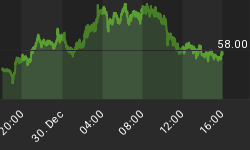As a general rule, the most successful man in life is the man who has thebest information
Desertification is a phenomenon that ranks among the greatest environmental challenges of our time, unfortunately most people haven't heard of it or simply don't understand it.
Desertification and land degradation is a global issue with desertification already affecting one quarter of the total land surface of the globe today
Today the pace of arable land degradation is estimated at 30 to 35 times the historical rate. Land degradation is costing US$490 billion per annum and desertification is degrading more than 12m hectares of arable land every year - the equivalent of losing the total arable area of France every 18 months.
One third of the earth's surface is covered with grasslands that are facing the threat of desertification. According to a study by the United Nations, 20 percent of our farmland, 30 percent of our forest and 10 percent of world's grassland are degrading worldwide. Over the past four decades, 15 percent of the Earth's land area - an area larger than the United States and Mexico combined - have been degraded through human activities.
Severe land degradation is now affecting 168 countries across the world, up from just a 110 a few short years ago.
Desertification doesn't refer to the advance of deserts which can and do expand naturally. Desertification is a different process where land in arid or semi-dry areas becomes degraded - the soil loses its productivity and the cover vegetation disappears or is degraded to the point where wind and water erosion can carry away the topsoil leaving behind a highly infertile mix of dust and sand.
Land degradation, and the eventual resulting desertification of dry land ecosystems is most often caused by human activities such as:
- Unsustainable farming - intensive farming depletes the nutrients in the soil
- Overgrazing - animals eat away grasses and erode topsoil with their hooves
- Deforestation or clear-cutting of land - the tree and plant cover that binds the soil is removed
- Misuse of water resources
- Industrial activities
Climate change can accelerate and intensify the degradation process.
The issue of desertification is not new, it has constantly played a significant role in human history, even contributing to the collapse of the world's earliest known empire, the Akkadians of Mesopotamia.
One of the most basic, fundamental problems (other than the rapid depletion of our fresh water resources) we've created for ourselves is the impact of human activities on the land we need to cultivate for our very survival.
"The top 20cm of soil is all that stands between us and extinction." Luc Gnacadja, executive secretary of the UNCCD
It takes 100 years to generate a single millimeter of topsoil - 24 billion tons of fertile soil disappear annually.
Conclusion
We obviously reached peak soil a long time ago, soil can be considered a non-renewable and rapidly depleting resource.
Given fears over the world's present ability to feed our current population - expected to pass the nine billion mark by 2050 - it's surprising desertification and land degradation is so absent on most people's radar screens.
According to the UN, global demand for food is projected to increase by 50 percent by 2030. It is projected there will be nine billion people to feed by 2050, that's a needed increase of one billion tonnes of cereal and 200 million tonnes of meat.
It's obvious the world needs a new farm - one the size of South Africa.
Unfortunately the UN also says that by 2030 an area twice the size of South Africa will become unproductive due to desertification, land degradation and drought.
Adding to our troubles is production gains from the Green Revolution are diminishing. Is the security of your food supply on your radar screen?
If not, maybe it should be.
















